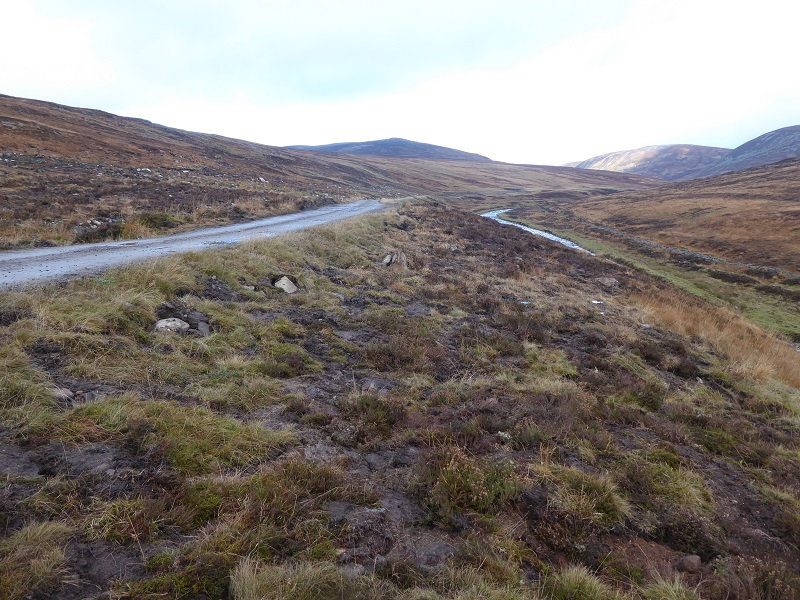
Following my two posts last December about the destruction caused by the hydro scheme in Glen Bruar (see here) and (here), I took a jog up the glen on Saturday. I was prompted to do so after planning staff at the Cairngorms National Park Authority were kind enough to inform me – unprompted – that significant restoration work had been undertaken over the summer.
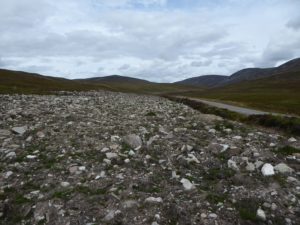

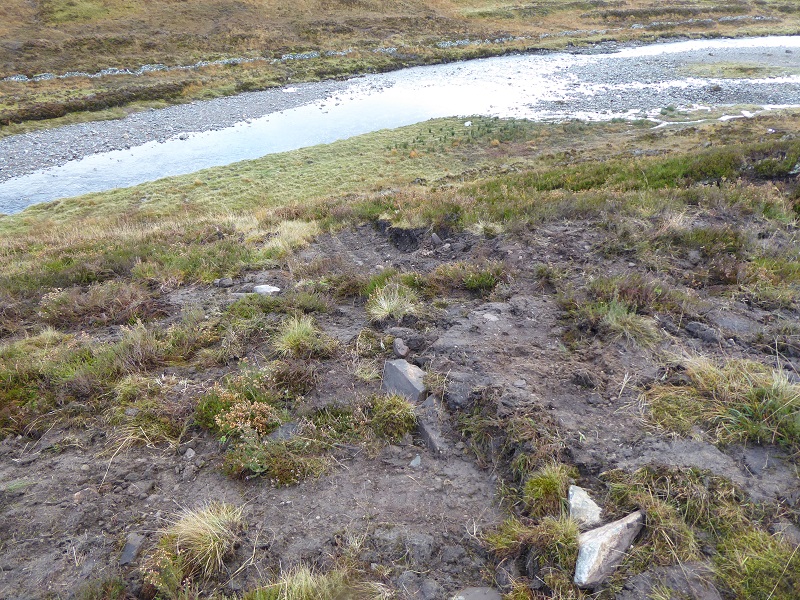 Photo showing how turves and other vegetation has been “robbed” from below the track to cover up the scar above. Note the digger scoop mark centre.[/caption]
Photo showing how turves and other vegetation has been “robbed” from below the track to cover up the scar above. Note the digger scoop mark centre.[/caption]
Its hard to tell how many boulders have been removed but given the failure to store and re-use vegetation, the only way the scar could be covered up was by robbing vegetation from elsewhere. In Glen Bruar this has been taken from the areas either side of the pipeline. While I am not an ecologist, it appears to have been done very well. There is more bare ground evident in the photo above, which I have used as it shows the work was all done by digger, than is evident along most of the track. Evidence of good practice is that the contractor has managed to remove vegetation without creating deep buckets holes and left sufficient vegetation to prevent soil erosion.

As a consequence the ground which has been “robbed” should recover quite quickly.
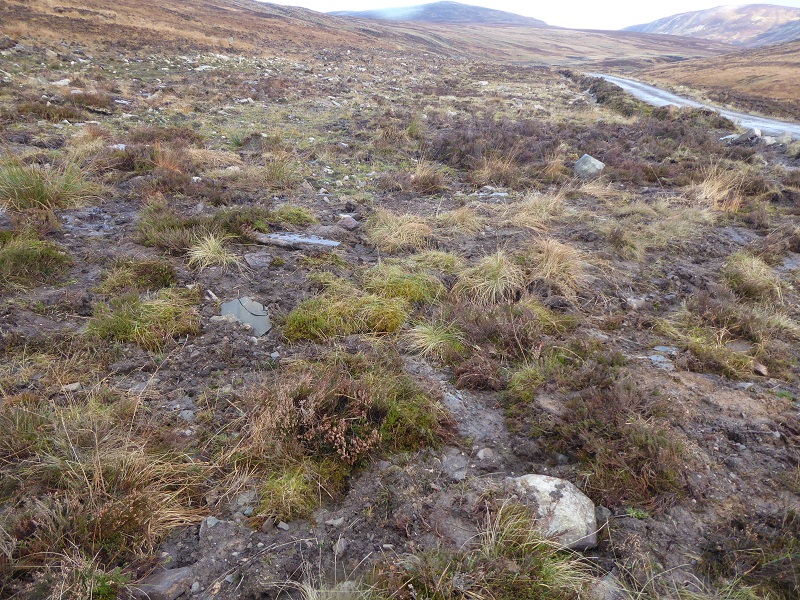
The work on the restored area is also in my view of high quality, with the restored surface being similar to the land on either side (rather than being pockmarked with ankle busting holes) while the transplanted vegetation appears to have taken. The result is that the ground is already blending with that to land around, a complete contrast to a year ago. In landscape terms this looks like an excellent example of disaster recovery. Its interesting that the Reinstatement Note provided by the CNPA suggests that the contractor who did the restoration was different to that who constructed the pipeline. I am tempted to suggest they deserve an award.
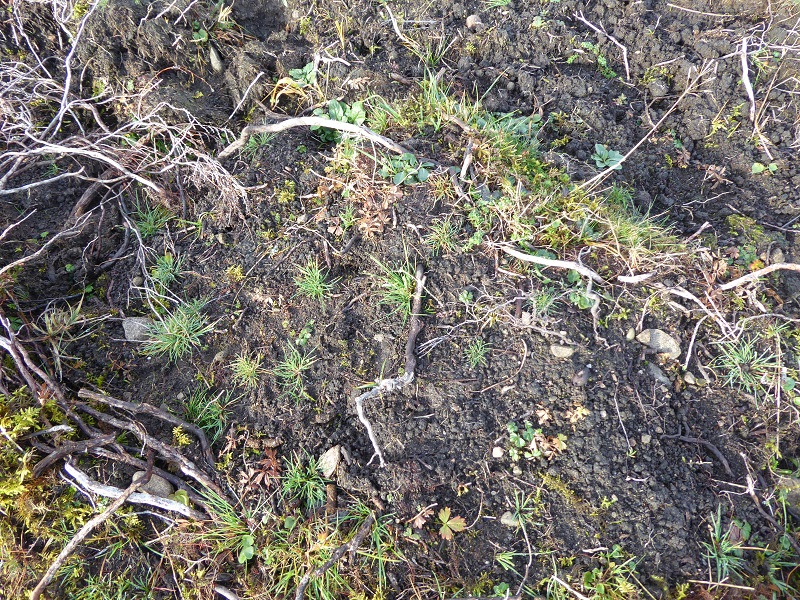
Its too early to say if the original poor restoration of the pipeline will have a permanent impact on the vegetation in the glen and, for example, allow new invasive species to move in. Once the soils and vegetation had not been stored properly, areas of bare ground were inevitable.
There is also still one area where the landscape scar is prominent, where the pipeline cuts across a slope above an area of deep peat:
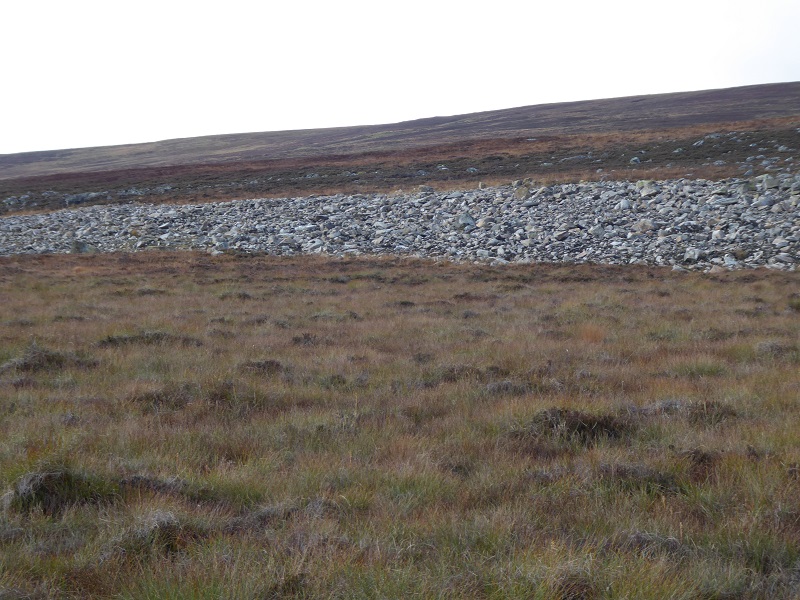
At present it looks like very little attempt has been made to restore this.
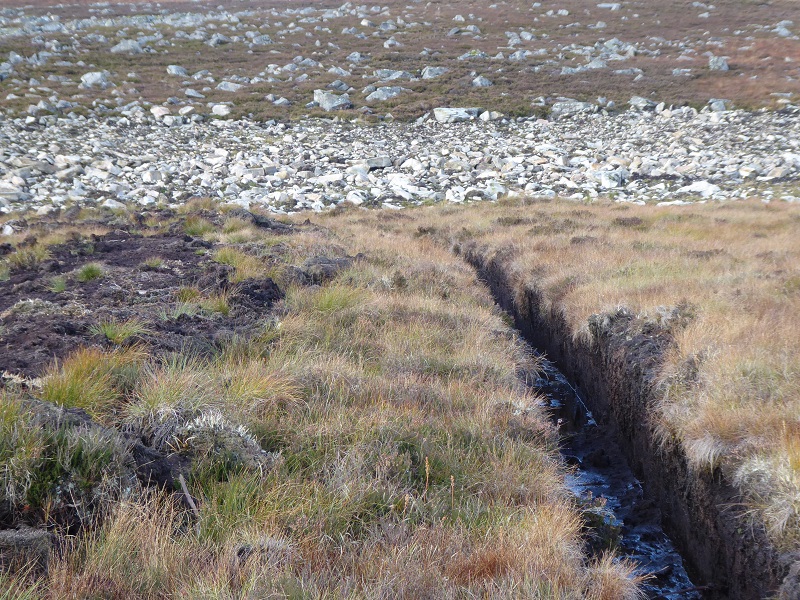
There are however some obvious opportunities to do so. The vegetation that has recently been removed to create this ditch could have been used to reinstate part of the boulder band.

My conclusion is the restoration of the pipeline still has a bit further to go but its an incredible improvement on how the glen appeared this time last year. CNPA staff and the contractors deserve to be congratulated for what they have managed to do so far to mitigate what was a landscape disaster. I will cover other aspects of the restoration work and impact of the hydro schemes in Glen Bruar in a further post.
Lessons from the Glen Bruar restoration
Here are a few lessons which I think should be learned from what happened in Glen Bruar:
- The Glen Bruar pipeline shows that contractors can cause incredible destruction to the landscape if not supervised properly. Developers appointing their own Ecological Clerks of Works to ensure high standards clearly did not work in this case. This creates a strong argument – which is relevant to the forthcoming planning bill – that instead of appointing their own Ecological Clerks of Works (who are dependent on them for their wages) Developers should pay higher planning fees. This would enable planning authorities either to supervise work directly or employ truly independent people to do so. Our National Parks need better means available to them to prevent disasters from happening in the first place.
- What Glen Bruar also shows that if restoration is non-existent or not to the required standard, its quite possible to rectify adverse landscape impacts if there is the will and a skilled contractor. If this can be done in Glen Bruar, then there is absolutely no excuse for Scottish Southern Electric and the Scottish Government to sit on their hands at Drumochter (see here).
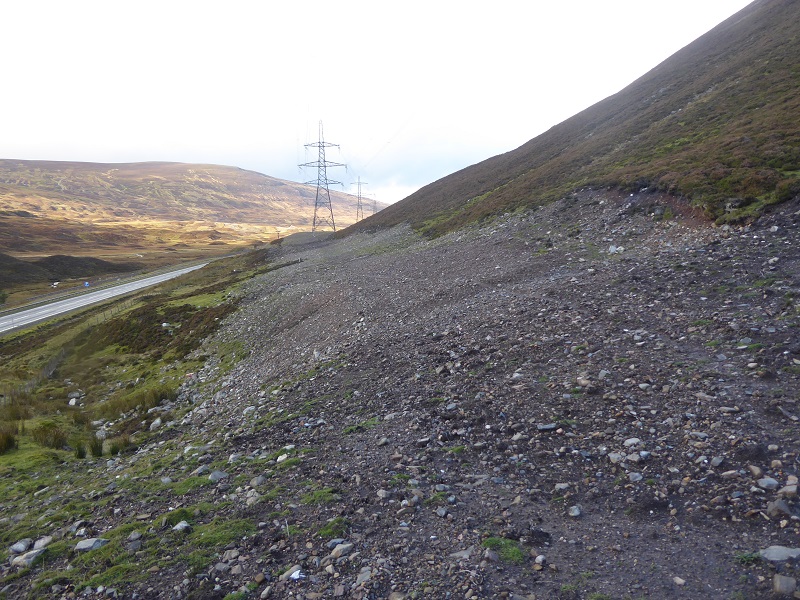
If Glen Bruar can be restored so can Drumochter - I hope the CNPA will now use what they have achieved in Glen Bruar to make the case for active landscape restoration in Drumochter.
- While the CNPA provided me with the re-instatement note, this was not published on the Park’s planning portal and there is no detailed documentation there (see here) about how the restoration works were to be undertaken. Other aspects of the restoration, which I will cover in my next post, were dealt with as Non-Material Variations to the existing consent and were published on the planning portal this year. This is extremely helpful to enable the public to understand what the CNPA has been doing. On the biggest issue however nothing has been published. I think it should, both for transparency but also to enable others to learn.

Another thoughtful post, Nick, and a rare happy story. I have thus far avoided walking up Glen Bruar but might now consider it. I am still reeling from the horrors of Gleann Cia-Aig, where the damage is on too massive a scale for any meaningful restoration.